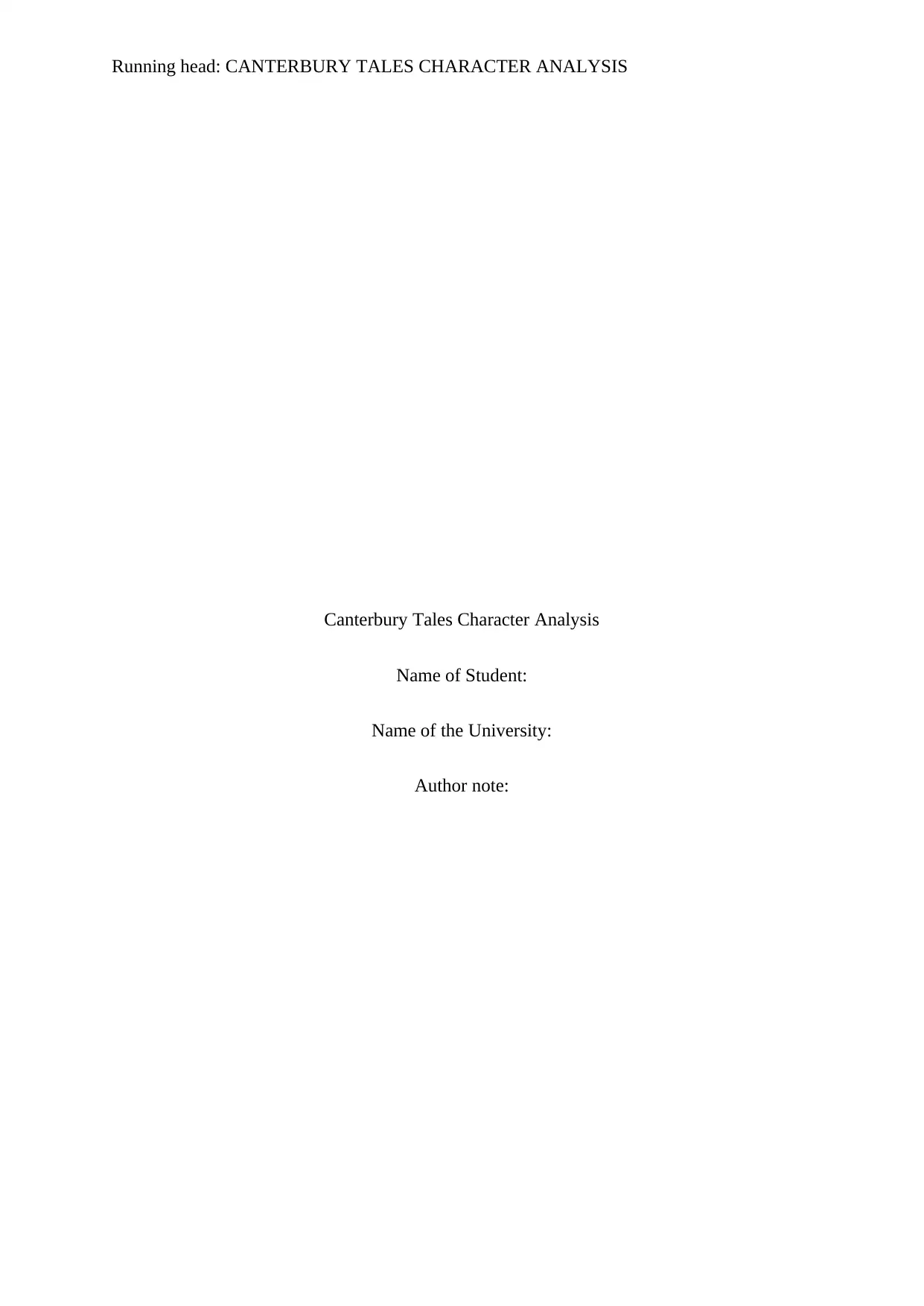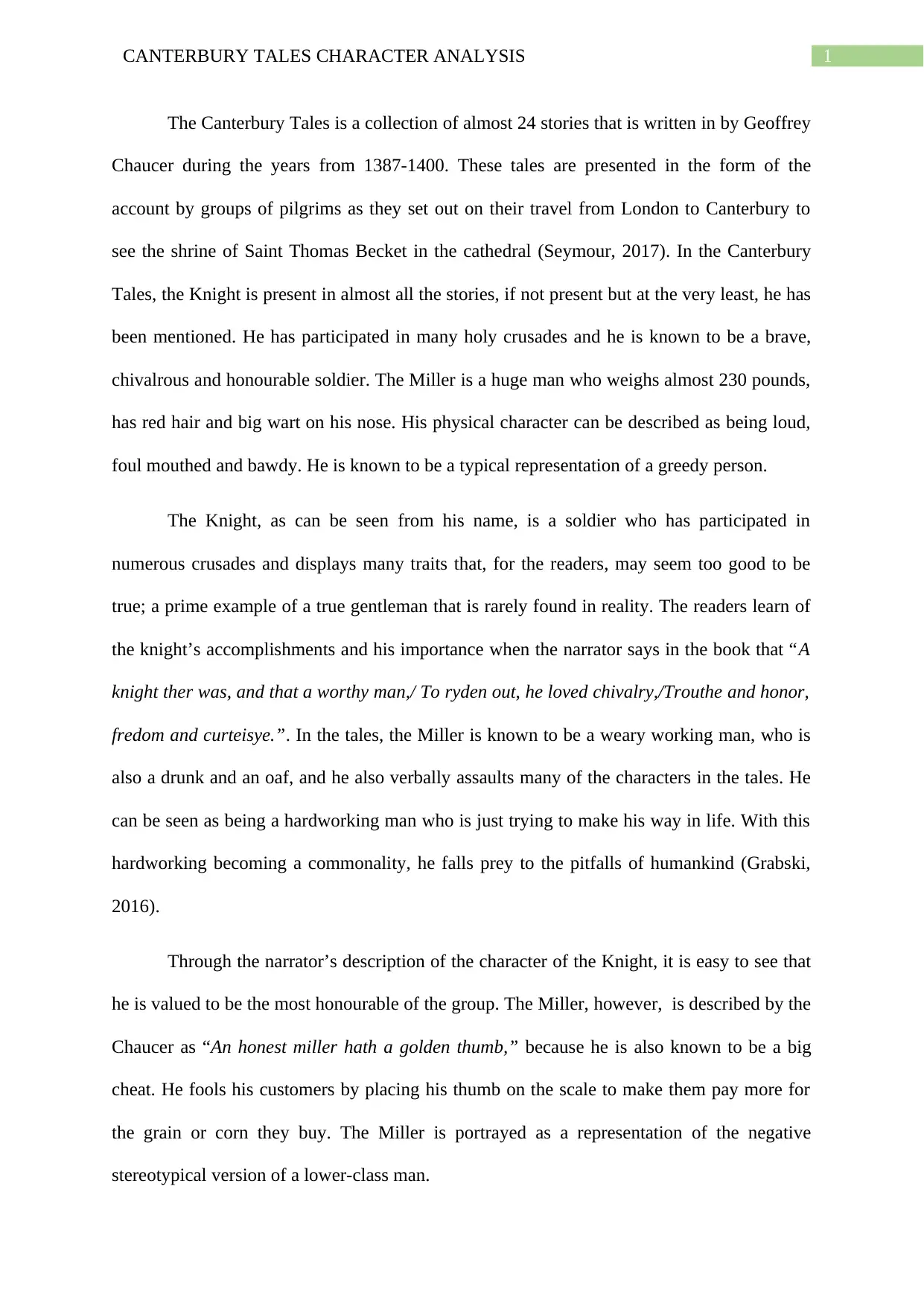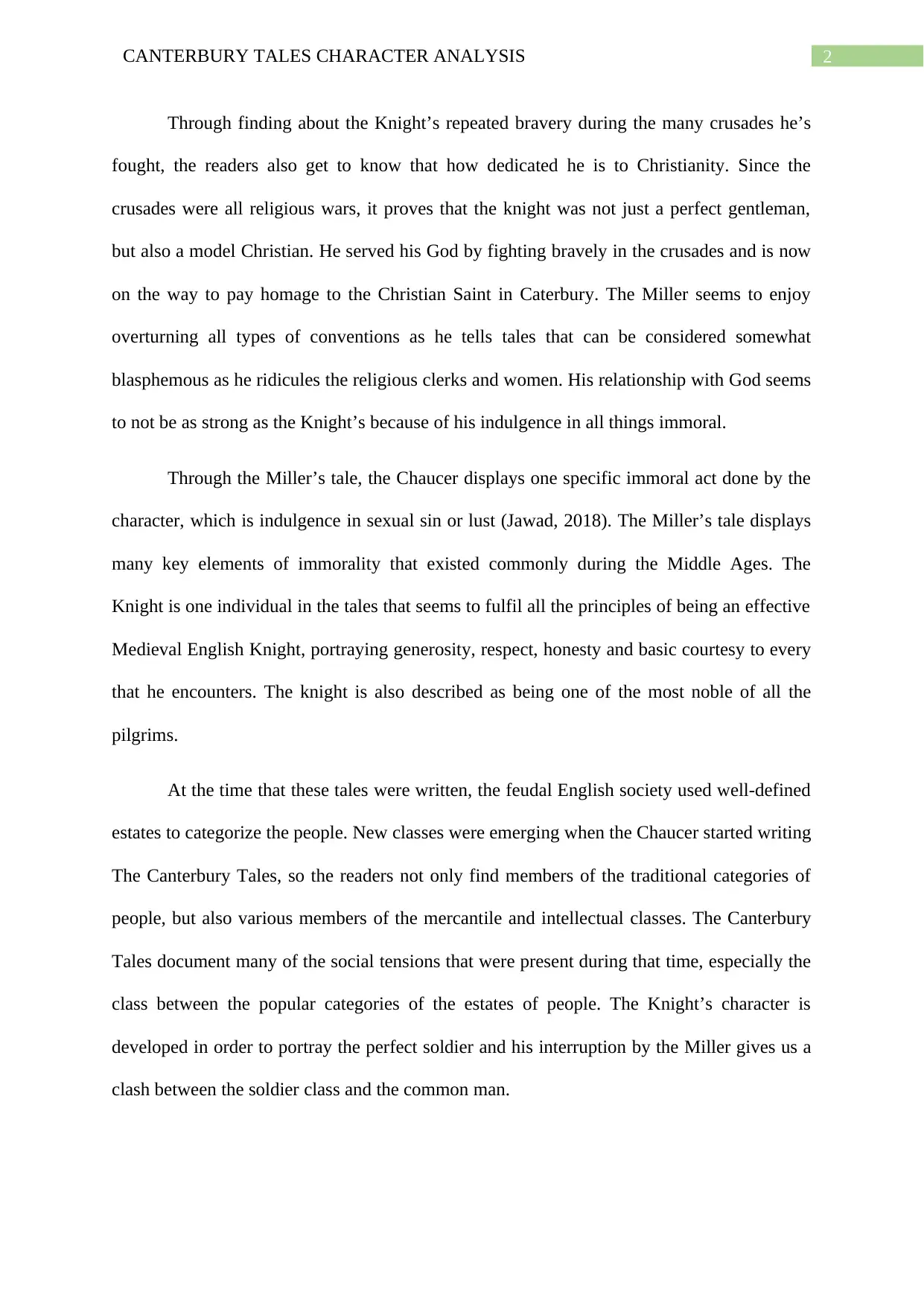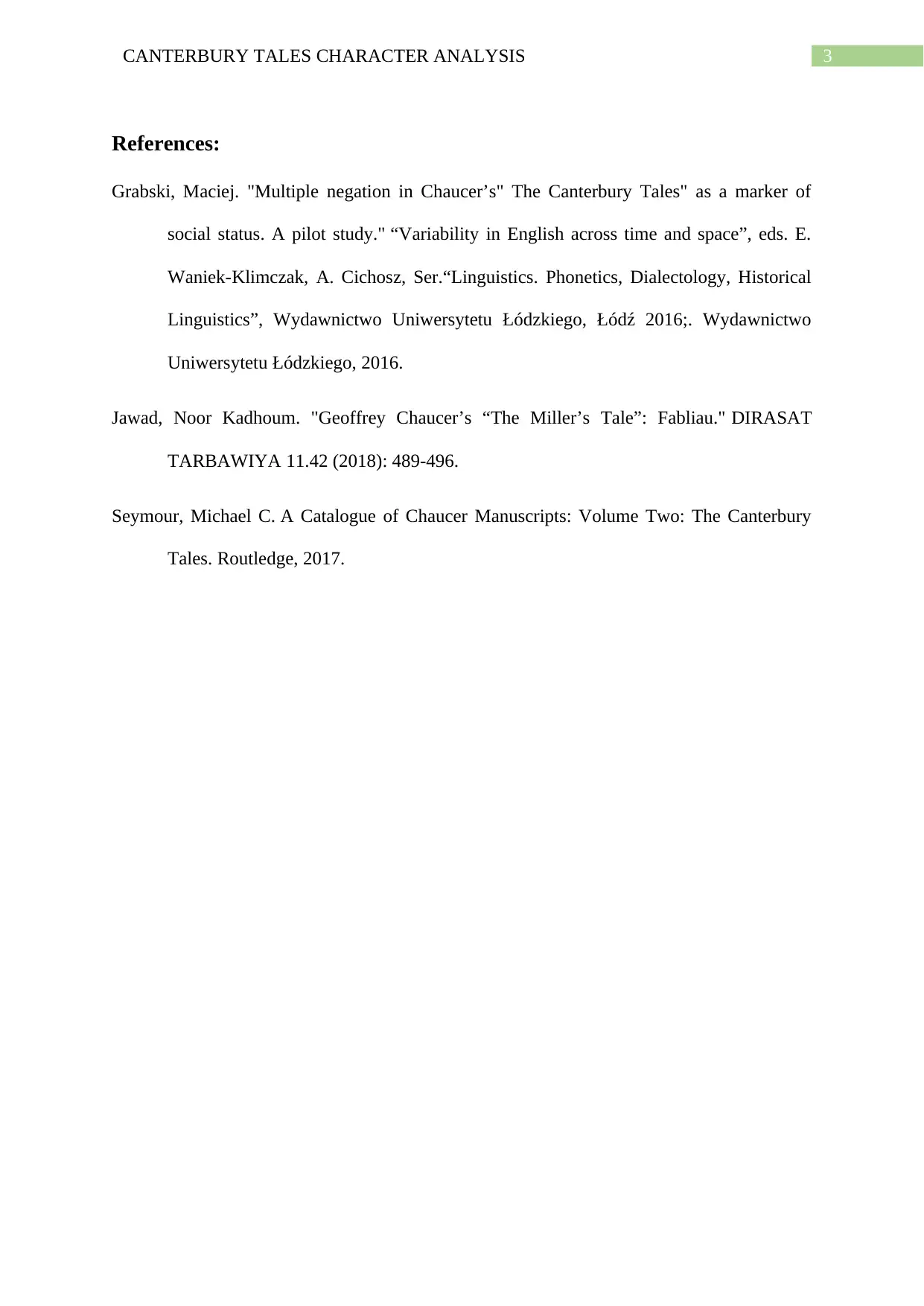Comparative Character Analysis: Canterbury Tales - Knight vs Miller
VerifiedAdded on 2023/01/17
|4
|977
|36
Essay
AI Summary
This essay provides a character analysis of the Knight and the Miller from Geoffrey Chaucer's Canterbury Tales. The Knight is portrayed as a chivalrous and honorable soldier, while the Miller is depicted as a boisterous and often immoral figure. The essay compares their professions, social standings, and relationships with God, highlighting the contrast between the upper and lower classes in medieval society. The analysis explores how their moral characters are presented through their actions and interactions within the tales. Furthermore, the essay examines the influence of the historical and cultural context on the development of each character, reflecting the social tensions and religious beliefs prevalent during the time. The Knight embodies the ideals of the noble class, while the Miller represents the common man, exposing the societal conflicts and moral ambiguities of the era.
1 out of 4





![[object Object]](/_next/static/media/star-bottom.7253800d.svg)